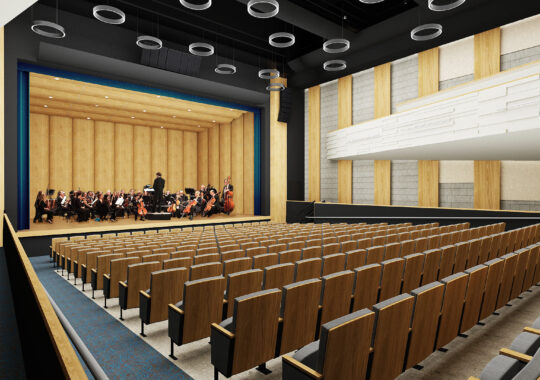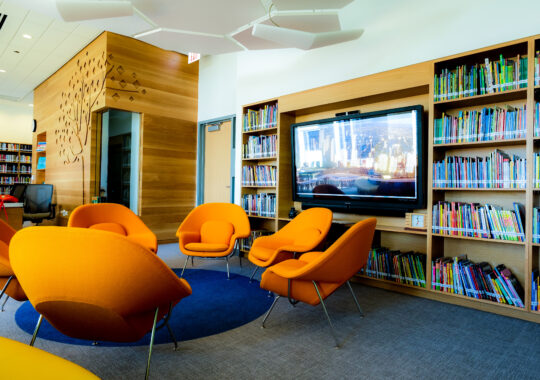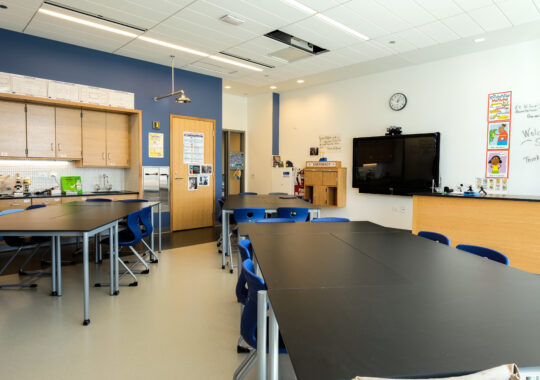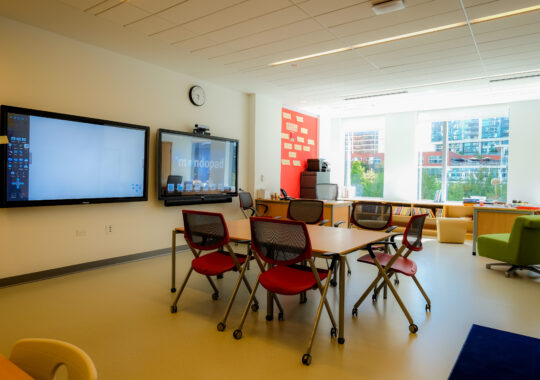Also published in SCN Magazine
We have all been swimming in AV buzz words the past few years, but one that seems to stand out above the rest is “collaborate.” It has taken on many different meanings when it comes to client expectations. So in this post I will break-down a few methods of collaboration, and what they mean for systems being designed today.
1. Single Room, Single Content (SRSC): This type of collaboration involves people sitting around a display collaborating over a single document on the screen. These types of systems are still widely used today, but the systems have been expanded a bit to allow more flexible collaboration elements. This might include wireless BYOD support, or annotation through touch interactive technology. It is important to understand when the client only needs this type of collaboration, because expensive and over complicated collaboration solutions could come at the cost of user satisfaction.
2. Single Room, Multiple Content (SRMC): When people mention collaboration, this is what they are most likely referring to. This type of setup involves people sitting around a display and viewing multiple pieces of content. All users are able to share content to the screen and collaborate though annotation. In many of these systems the users are looking for wireless and hard wired connection to work with the same solution on the same canvas. These systems use guest and enterprise Wi-Fi to share content. Most of the solutions today are still local to the room, but are starting to add capabilities for wider applications.
3. Multiple Room, Multiple Content (MRMC): This type of solution consists of multiple users a multiple locations collaborating on content within a shared session. At the basic level this can include features of Office365 and now Apple iWork real-time collaboration. Allowing multiple users to edit and collaborate in real-time on cloud based documents as a form of MRMC. Taking this a step further would introduce series of collaboration appliances or software solutions that could be shared across an enterprise network. Users in Room A can share a canvas with Room B with both rooms having the ability to share multiple pieces of content for collaboration and annotation. Tying in audio and video for conference completes the collaboration circle. This level of collaboration is where users ultimately want to get to, even if their work culture isn’t at that level yet. So as designers of these systems we need to keep in mind the future expansion of these collaboration systems. As collaboration systems extend into this category network security and central management because very important. So it’s key to get the primary IT stakeholders involved early to figure out if their company network even allows this sort of collaboration.
All in all, there are many forms of collaboration. We can all agree that to give the client the Cadillac solution when they only need the Chevy is not a good use resources. However, to give them the Chevy while preparing them for the Cadillac down the road, is a wiser investment and design strategy. This all of course stems down to the intended user experience and needs. If the client has no need for full on collaboration with wireless content sharing and cloud collaboration, then it’s not wise to put a system into their space when they won’t use half the features. Often it just ends sup complicating the system to the point where the users get deterred from using it. However, placing a collaboration system that need that user needs has a greater chance of adoptability and success. In the long run a success project using the right box or software is much better than selling the more expensive box. It’s not about what latest and greatest, but more about properly interpreting the customer’s definition of collaboration, and planning accordingly.









